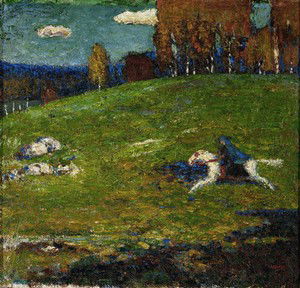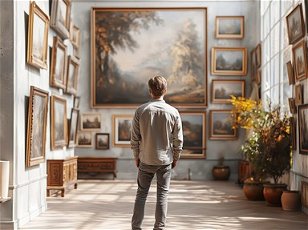 These works were produced by members of the German Expressionist movement known as Der Blaue Reiter in the years leading up to World War I. Match each painting with its creator.
These works were produced by members of the German Expressionist movement known as Der Blaue Reiter in the years leading up to World War I. Match each painting with its creator. Average, 10 Qns, looney_tunes,
Nov 09 24
 These works were produced by members of the German Expressionist movement known as Der Blaue Reiter in the years leading up to World War I. Match each painting with its creator.
These works were produced by members of the German Expressionist movement known as Der Blaue Reiter in the years leading up to World War I. Match each painting with its creator. 
|
|
|
|
 Quick Question
Quick Question|
|
 = Top 5% Rated Quiz,
= Top 5% Rated Quiz,
 Top 10% Rated Quiz,
Top 10% Rated Quiz,
 Top 20% Rated Quiz,
Top 20% Rated Quiz,
 A Well Rated Quiz
A Well Rated Quiz
· All questions, answers, and quiz content on this website is copyright FunTrivia, Inc and may not be reproduced without permission. Any images from TV shows and movies are copyright their studios, and are being used under "fair use" for commentary and education.